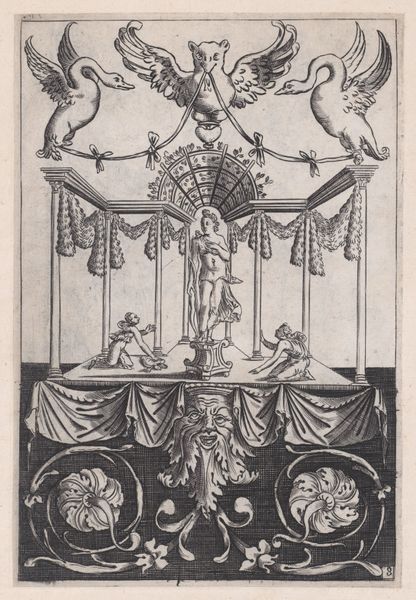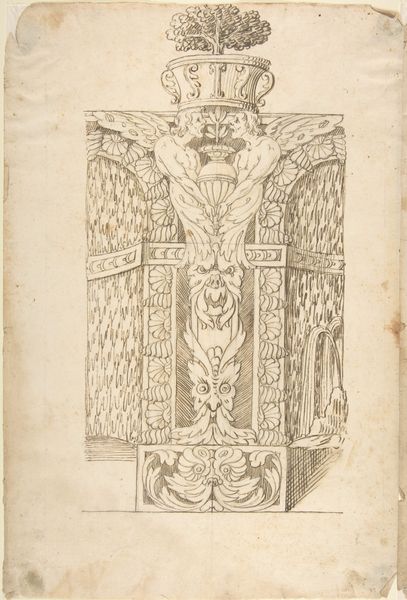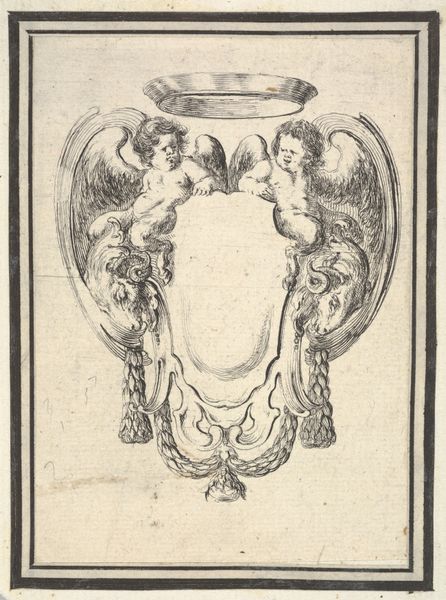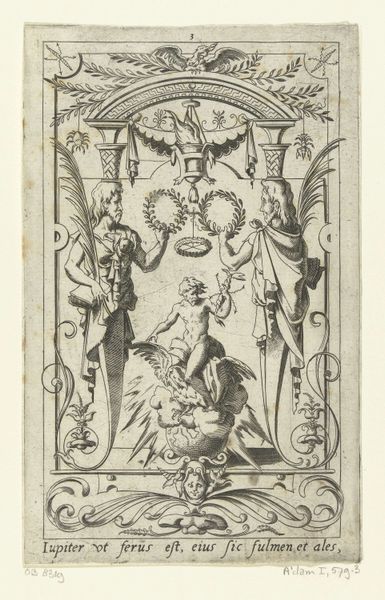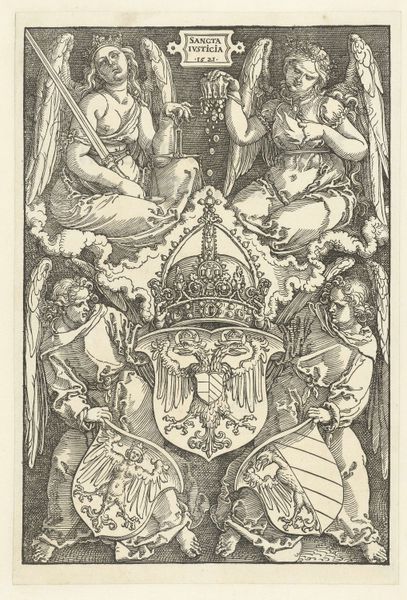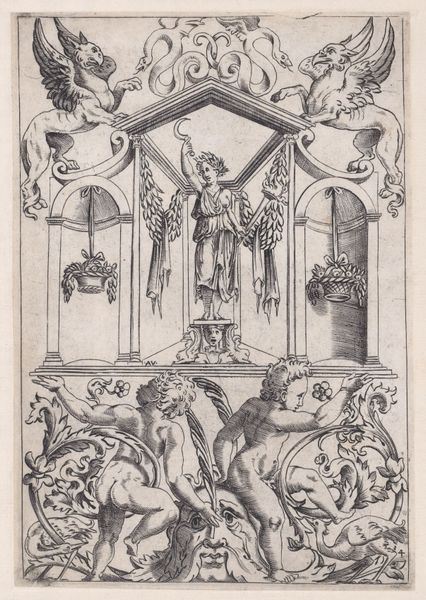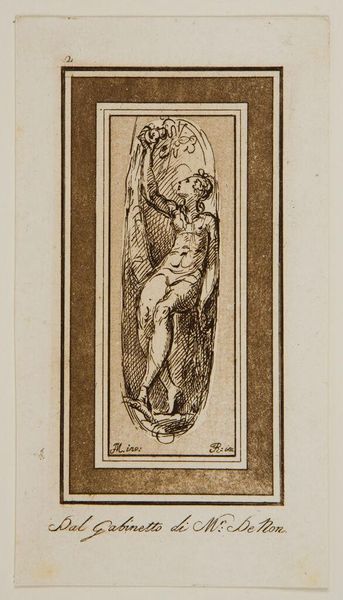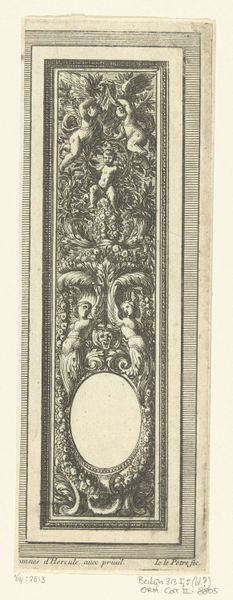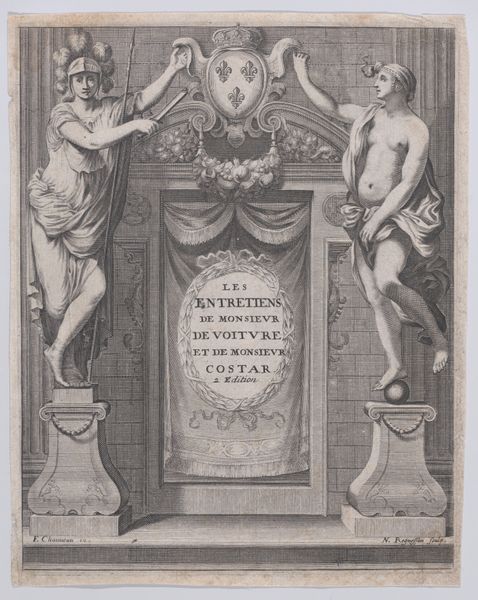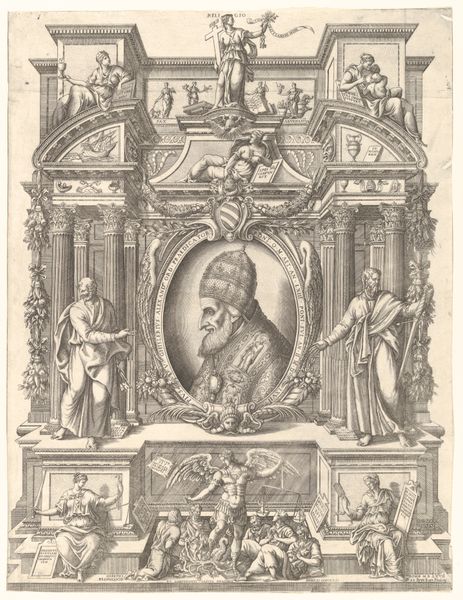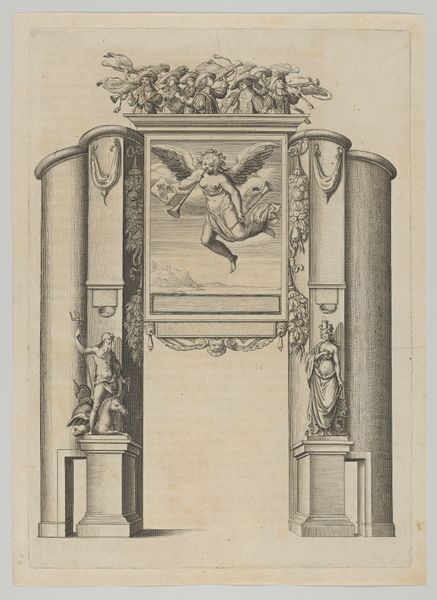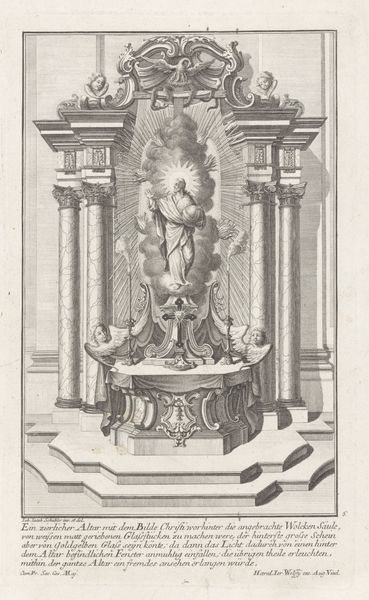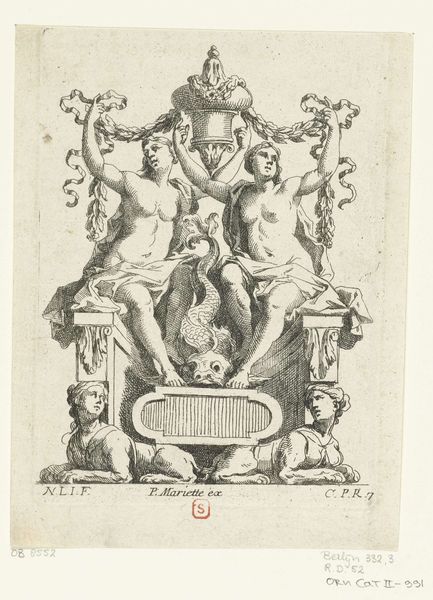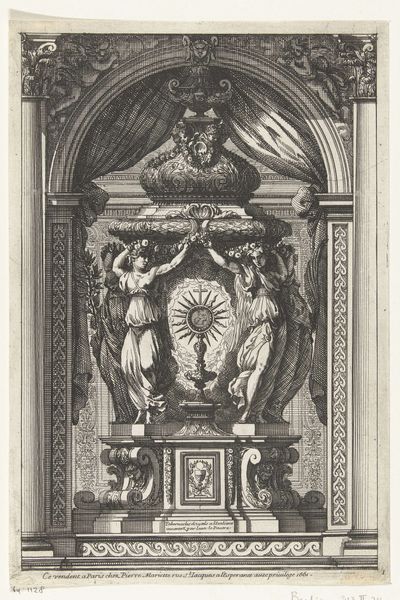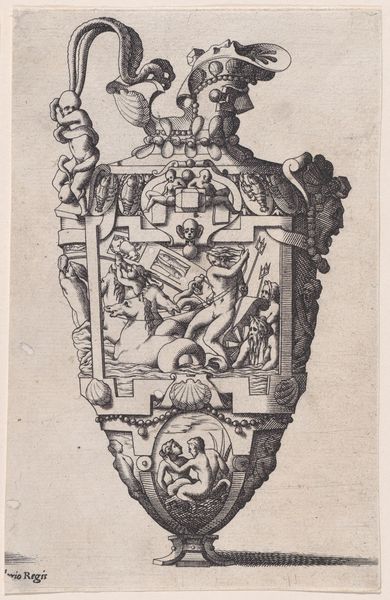
A Greek Patriarchal Crown – Tiara Patriarchalis Graeca (Aubry de La Mottraye's "Travels throughout Europe, Asia and into Part of Africa...," London, 1724, vol. I, plate 9) 1723 - 1724
0:00
0:00
drawing, print, engraving
#
portrait
#
drawing
#
baroque
# print
#
decorative-art
#
engraving
Dimensions: sheet: 13 1/4 x 10 1/4 in. (33.7 x 26 cm)
Copyright: Public Domain
Editor: So, this engraving from 1723-24, “A Greek Patriarchal Crown” by William Hogarth. It depicts, well, exactly that - a crown, but it's so detailed and ornate. It gives me a sense of grandeur and the divine, almost theatrical. What jumps out at you? Curator: The visual vocabulary here speaks volumes, doesn't it? Observe the cherubic figures flanking the central band; they aren't mere decoration. These recall classical notions of piety, reborn within a Christian framework. What do you make of their placement on this crown specifically? Editor: Hmm, I guess placing the cherubs implies a divine endorsement of the Patriarch's authority? It makes it seem like the crown isn't just a symbol of power, but also of some spiritual connection. Curator: Precisely. And note how the meticulously rendered floral patterns are incorporated. Each element - the fleur-de-lis, the palmettes - contributes to an overall impression of legitimate rule and tradition. Even the cross atop reinforces the crown’s spiritual meaning, grounding this earthly object within a cosmic order. What might an observer in the 18th century have thought of all this? Editor: I hadn't considered it that way, that's fascinating. I guess they would have seen it less as a simple illustration and more as a statement about authority, religion, and tradition all intertwined? The visual symbolism tells a much bigger story. Curator: Exactly. These images shape perceptions and beliefs, echoing through generations. Each visual component reflects values of power, religion, and continuity and they shape our cultural memory. It all ties together. Editor: I see! The symbols have a lot to say about that period and its beliefs. It really highlights how even seemingly simple images can carry such significant weight. Thanks for shedding light on that.
Comments
No comments
Be the first to comment and join the conversation on the ultimate creative platform.
